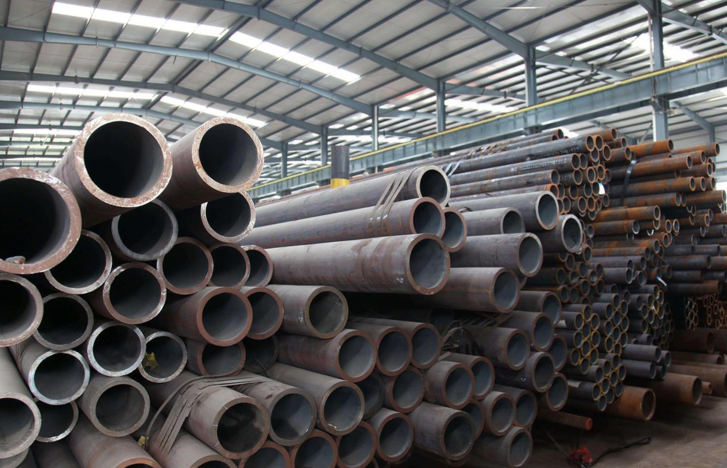
What is Seamless Tubing?
Seamless, by definition, means “perfectly consistent,” but many people get confused by terms like “seam-free” and “welded-and-drawn” when it comes to selecting tube. Seamless tubing, welded tubing, and seam-free tubing all appear to be consistently free of seams, but a closer examination reveals big differences.

The main advantage of seamless tubing is the lack of weak points. For example, longitudinally welded pipes have weak points at the welds and are susceptible to corrosion and structural failure. Therefore, seamless pipes have higher corrosion resistance and structural integrity than welded pipes.
Seamless tubes also have a much smaller inner diameter than welded tubes, making them a better choice for high-precision equipment such as the high-pressure fuel lines in modern engines. Some seamless pipes in the medical and pharmaceutical industries have capillary-sized inside diameters that are simply not achievable with welded pipes.
Seamless tubes can be made from a variety of alloys, but currently non-corrosive materials are mainly used. These include carbon steel, austenitic, duplex steel, stainless steel, nickel, molybdenum, tungsten, titanium and zirconium alloys.
How is Seamless Tubing Made?
Although seamless tubing is superior to welded tubing, it requires a complex manufacturing process that significantly increases the price of the final product. Additionally, manufacturing long and wide seamless tubes can be challenging as they are directly related to the size of the blank and the sophistication of the manufacturing equipment.
The manufacturing of seamless tubing starts by heating solid cylindrical or square-shaped billets to increase their malleability. Then, using a mandrel, the billet is pierced through the middle, creating a hollow tube. The tube is rolled to the desired thickness and length depending on the requirements.
Then, the tube goes through a series of dies to achieve a precise outer and inner diameter. This is followed by heat treatment in a vacuum furnace (air-drying is not recommended due to the danger of staining), which is crucial in giving the seamless tubing better mechanical properties, like increased strength and improved ductility.
The manufacturing process also involves straightening, as bends can be a weak point of seamless tubing. Finally, manufacturers use surface finishing, like cleaning, polishing, and applying a protective coating.
Quality control requirements for seamless tubing:
1. Material control: The quality of seamless tubes must first be controlled from raw materials, using high-quality raw materials, such as high-purity steel, to ensure the material performance and stability of seamless tubes.
2. Production process control: During the manufacturing process of seamless tubes, various parameters must be controlled, such as pipe making temperature, heater temperature, tube blank size, etc., to ensure that the diameter and thickness accuracy of seamless tubes meet the requirements while reducing defects.
3. Surface treatment: The surface treatment of seamless tubes also has a certain impact on its quality. Surface roughness, oxide scale removal, pickling and other processes are crucial to ensuring the quality of seamless tubes.
4. Mechanical property testing: The mechanical property testing of seamless tubes is also an important step in ensuring the quality of seamless tubes. The tensile strength, yield strength, elastic modulus, etc. of seamless tubes are tested to ensure the performance of seamless tubes.
5. Non-destructive testing: The testing of seamless tubes is an important means to ensure the quality of seamless tubes. During the manufacturing process, various non-destructive tests such as ultrasonic testing and magnetic particle testing are required to eliminate defects.
The significance of quality control of seamless tubing:
As an important steel product, seamless tubes are widely used in industrial production and civil fields. However, if quality control is not strict during the manufacturing process of seamless tubes, the following problems may occur:
1. Safety risks: Unqualified quality of seamless tubes may lead to the risk of accidents during production and use, resulting in personal and property losses.
2. Economic losses: Unqualified seamless tube quality will affect the service life and performance of seamless tubes, resulting in economic losses.
Therefore, it is very important to implement quality control of seamless tubes.
Uses of seamless steel tubing:
Seamless tubing is widely used in industries that require strength, durability and corrosion resistance. Mainly used in the oil and gas industry, especially pipelines and drilling (such as seamless casing). For these uses, welded tubing is not strong enough due to the high pressures involved, and welds are particularly prone to corrosion and cracking, affecting reliability.
At the same time, seamless stainless steel pipes tubing would provide higher corrosion resistance and longevity. Seamless stainless steel tubing is also crucial in hydraulic systems used for oil/gas drilling operations, as it provides reliable and safe operation. But other industries also use seamless stainless steel tubing to improve the reliability of certain parts. For example, high-pressure fuel injection systems in modern gas and diesel engines require seamless tubing to ensure durability and reliability.
In addition, the frames of modern trucks are made of seamless square tubes, which increases the tensile strength of the chassis and thus improves the performance of the vehicle. Meanwhile, aircraft manufacturers are also using seamless square tubes to construct aircraft frames and components, designed to increase stiffness without adding weight. Like cars, modern aircraft use seamless tubing for their fuel and hydraulic lines.
The construction industry also increasingly uses seamless steel tubing due to its stiffness and minimalistic aesthetic appeal.
Other industries using seamless tubes include the food processing industry (seamless stainless steel tubing), shipbuilding (seamless steel tubing).


